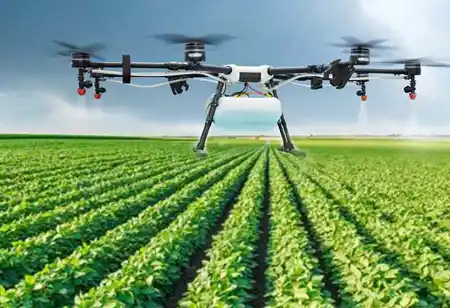Thank you for Subscribing to Agri Business Review Weekly Brief
Developments in Rainwater Harvesting
Rainwater harvesting is poised for a promising future as it offers a sustainable and environmentally friendly means to collect and store rainwater for various purposes.

By
Agri Business Review | Friday, November 24, 2023
Stay ahead of the industry with exclusive feature stories on the top companies, expert insights and the latest news delivered straight to your inbox. Subscribe today.
Water scarcity will be substantially addressed, and sustainable water use will be promoted through smart technology integration, broader adoption, and improved water quality.
FREMONT, CA: Rainwater harvesting is poised for a promising future as it offers a sustainable and environmentally friendly means to collect and store rainwater for various purposes. It has gained popularity in recent years and is expected to grow as people become conscious of the benefits of rainwater usage and the need to conserve resources. Several key trends are shaping the future of rainwater harvesting, making it an even more efficient and widespread practice. Smart technology integration systems enable real-time water usage and storage monitoring, automate irrigation schedules, and provide remote control and management.
The water demand escalates as the global population continues to grow. Rainwater harvesting presents a practical solution to this issue and is expected to be more widely adopted. Governments and organizations will likely incentivize and subsidize rainwater harvesting systems, making them accessible and affordable for many. It enhances convenience and ensures efficient water utilization. Advances in filtration systems will improve the quality of rainwater collected, making it cleaner and safer for various uses, including drinking and household purposes. Improved water quality will expand the potential applications of collected rainwater.
Rainwater harvesting systems are expected to integrate with other water sources, such as grey water (wastewater from showers, sinks, and washing machines) and stormwater. The integration will optimize water usage, ensuring it is used efficiently and sustainably. Rainwater harvesting is inherently sustainable as it reduces reliance on municipal water supplies, conserves water resources, and minimizes stormwater runoff that can harm the environment. Its sustainability depends on proper system design, maintenance, use, and adaptation to local climate conditions. When executed correctly, rainwater harvesting contributes significantly to sustainable water usage.
The need for sustainable water sources becomes more critical. Rainwater harvesting offers a practical solution by collecting and storing rainwater, reducing reliance on municipal supplies, and conserving this valuable resource. Changing rainfall patterns cause water scarcity and drought in many regions. Rainwater harvesting provides a reliable water source during droughts, helping communities adapt to changing climate conditions. It reduces stormwater runoff, which can pollute waterways and harm ecosystems. By collecting and utilizing rainwater, households and communities can lessen their environmental impact and safeguard precious water resources.
Rainwater harvesting offers a dependable source of clean water for various purposes, enhancing water security. In areas where water costs are rising, rainwater harvesting can help reduce water bills, leading to substantial cost savings for households and communities. The gardens use vertical structures to efficiently collect and store rainwater in urban areas where space is limited. They are a practical solution for urban households and communities. Rainwater-fed irrigation is gaining traction in agriculture and landscaping, providing a sustainable way to water crops and landscapes while conserving water resources.





